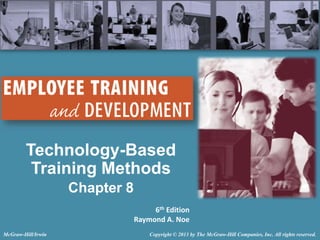The document discusses various technology-based training methods including e-learning, mobile learning, simulations, virtual reality, intelligent tutoring systems, and social media. It provides examples of different technologies used for training, benefits of technology-based training methods, factors to consider in using social media for training, and tips for developing effective online learning. The document aims to explain how new technologies can influence training and enhance learning transfer.




















































